LG 29EA93 Monitor Review - Rev. 1.25
by Chris Heinonen on February 12, 2013 8:49 PM ESTOnce again we are copying our charts from our Tablet and Smartphone workflow here for monitors. As I mentioned earlier, you can’t compare these to prior results due to the use of dE2000 for numbers. Another key change here is the ability to use meter profiling for doing measurements, which I’ll elaborate on here a bit to put these numbers into context.
There are two main types of meters: colorimeters and spectrometers. Colorimeters are usually cheaper, and use color filters to read the different colors of light. Spectrometers often cost more but actually “read” the light instead of using filters. This difference is key as color filters were very good when the only light sources were CRTs or CCFL lamps, but now with White and Multi-colors LEDs, and OLED displays, we have light with a different spectral makeup than before, which the filters are often not designed around. This can cause a colorimeter to have incorrect readings but a spectrometer will not.
The reason we don’t always use spectrometers is because they are much slower, and they read at low light much worse that a colorimeter. With meter profiling, you use a spectrometer and colorimeter to read colored patches from a display, and then the software analyzes the results. This creates a 3x3 correction matrix for the colorimeter that then allows it to correctly read the light from the display, even if it is LED or OLED based. The key thing here is this now allows us to read shadows better, and do more readings to produce better results.
The main area of difference here is going to be in blues. Compared to 100% White, 100% Blue has only 7% of the light output, making it very dim. This makes it harder to read for a spectrometer, which makes it more prone to error. Now that we can use a profiled colorimeter to make this reading, and in my case use a C6 meter that can average 10 results at a time to produce a more accurate number, our blue numbers may be different than before, but they will be more accurate.
| Pre-Calibration | 200 cd/m² Target | 80 cd/m² Target | |
| Primary and Secondaries dE2000 | 2.3002 | 1.4839 | 2.0847 |
| Colorchecker dE2000 | 2.1689 | 1.0185 | 0.9915 |
| Saturations dE2000 | 1.7017 | 1.0126 | 1.1254 |
With that out of the way, we can look at the CIE gamut chart and see that the LG 29EA93 has a bit more than the sRGB gamut available, with reds and greens that extend beyond the CIE triangle. Pre-calibration our numbers look very good, but with a bit of over-saturation in the reds and greens. The 200 cd/m² calibration numbers look better than the 80 cd/m² when it comes to the CIExy chart, but frankly I’m more concerned with the color checker and saturation charts. Most people only focus on the CIE chart, but it really just shows the performance of 6 colors and the size of the gamut, but tells you nothing about the performance of the other 16.7 million colors you might use.
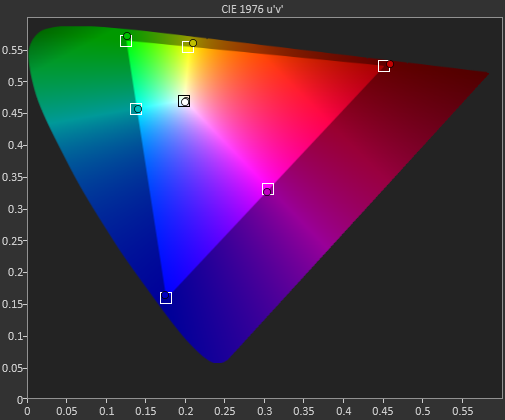
Pre-calibration, the dE2000 number for the Color Checker chart is quite good on the LG 29EA93. Until we have more monitors done with the new workflow we can’t be certain of how good this is, but overall it does look very nice. The main issues are in pure white, and those Yellow-Red-Green tones that fall at the edge of the gamut. The bit of over-saturation that we saw earlier causes these to be a bit too-rich and leads to some visible errors there.
After calibration, only those over-saturated colors provide anything to care about at all. Beyond those four points, the other 20 samples are nearly perfect, with no visible error at all even in blues. If those final four points were perfect there would be nothing to complain about at all with the LG 29EA93, but even with them it produces overall dE2000 numbers that are fantastic.
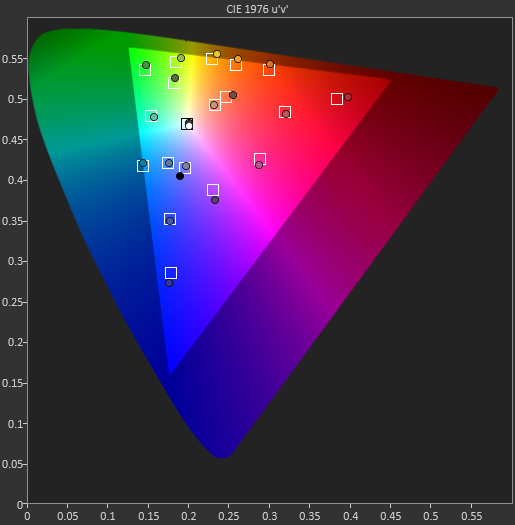
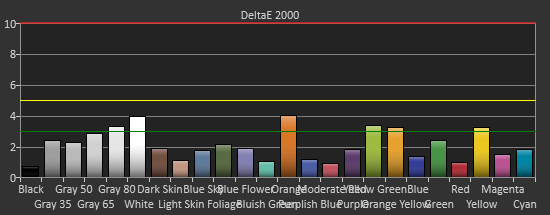
Pre-calibration, the saturation numbers for the LG are good, but you can see quite a few of the measurements are at or close to the dE2000 3.0 mark. Post-calibration this improves, especially the 20% data, with only the 100% green and yellow color swatches measuring over 3.0, and only four measurements total over a dE2000 of 2.0. The calibrations push the saturation measurements from good to excellent.
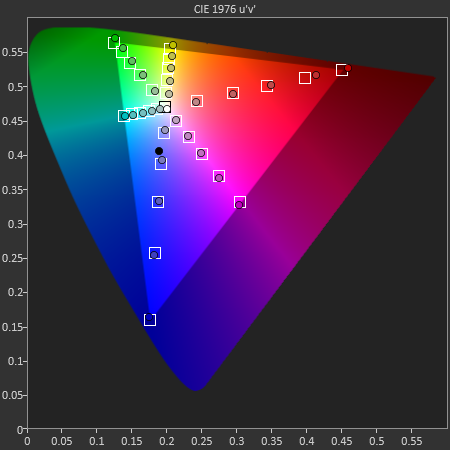
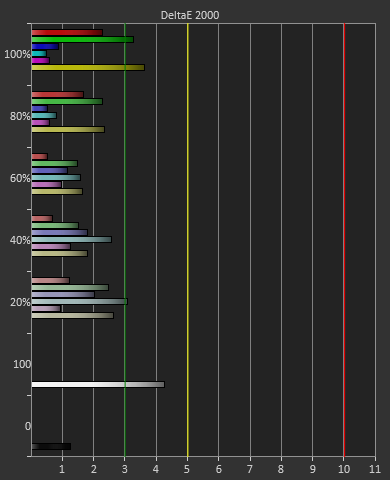
Taking these measurements in full, it seems that after calibration, the only place you will see any color errors on the LG 29EA93 is in a fully saturated red, green, or possibly yellow. As soon as the saturation drops below 100% the error level drops drastically, and you won’t be able to see an error at all. Unless you start at a pure-red screen all day long, the color of the LG 29EA93 is going to be very impressive.











108 Comments
View All Comments
genomecop - Wednesday, February 13, 2013 - link
Is this available in the US? I've looked but don't seem to find it listed anywhere. Thanks.genomecop - Wednesday, February 13, 2013 - link
Ebay?cheinonen - Wednesday, February 13, 2013 - link
I'm not sure when US availability is, I just know it was delayed after the initial review with the problems that were found.buhusky - Wednesday, February 13, 2013 - link
Not saying you need to purchase every item you review at retail, but I do think that it's kind of weird that they brought you a monitor with the specific purpose of changing a prior review. It's one thing to be shipped something for review when it's first released, it's another when the company says it's unhappy with that review, asks exactly what can be done to improve the review, and then provides you with a specific unit that is meant to change your opinions in the prior review.flexcore - Wednesday, February 13, 2013 - link
I have to believe that LG wouldn't be stupid enough to send a special unit that is different than what they will be selling to the public. If that happened I know they would get caught and it would be the last time A LOT of users bought anything from them! I just don't see them going through all the trouble just to ruin their brand name in the end. I will definitely be paying attention to this model in the future.I do agree that LG needs to either differentiate this upgraded model from the original or offer the original model buyers an upgrade.
KLC - Wednesday, February 13, 2013 - link
But how will the public know their monitor is different from the reviewed one? Almost no one has the equipment, the time and the knowledge to replicate this testing on their home unit. I go and buy one and I assume it's working like the review said it was, but I have no data to support that assumption. And once I spend the money I'm certainly going to have a healthy dose of confirmation bias that tells me my monitor really is fabulous, because the review at Anandtech told me it is.shamgar03 - Wednesday, February 13, 2013 - link
You should probably put a disclaimer at the beginning of the previous (1.09) review so that people don't get confused when they search for reviews online.secretmanofagent - Wednesday, February 13, 2013 - link
Don't know if they'll read this far into the comments, but thanks, LG. It's awesome for a company to take the negative feedback and use it to improve their product before releasing it. This monitor's now on my radar.Oxford Guy - Wednesday, February 13, 2013 - link
Still waiting for Anandtech to address PWM backlight flicker, a significant drawback to many LED backlights.Still waiting.
waiting......
Oxford Guy - Wednesday, February 13, 2013 - link
Also, if you're going to make your contrast ratio comparison more meaningful, you should include an A-MVA panel.